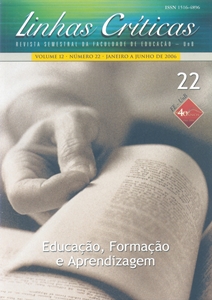Plataformas de aprendizaje: ¿herramientas técnicas o psicológicas?
DOI:
https://doi.org/10.26512/lc.v12i22.3287Keywords:
Plataformas de aprendizaje;, Instrumentos psicológicos;, Tecnologías de la información y comunicación;, TICAbstract
En el documento se abordan algunos principios de diseño instruccional vinculados con el constructivismo sociocultural y la cognición situada referidos al diseño de entornos de aprendizaje apoyados con tecnologías de la información y comunicación (TIC). Se analizan las potencialidades educativas de dichas TIC en su carácter de signos o instrumentos psicológicos en contraste con su empleo restringindo como herramientas técnicas. Se destacan algunas características de los entornos apoyados con las TIC que potencian el aprendizaje y se concluye remarcando la necesidad de realizar investigaciones sobre los mecanismos de influencia educativa y las practicas educativas reales que ocurren en diversas experiencias escolares y autoiniciadas mediadas por la tecnologia.
Downloads
References
ARENDS, Richard. Learning to teach. 6. ed. New York: McGraw Hill, 2004.
BERGER, Carl; KAM, Rosalind. Training and instructional design. Laboratorio de InvestigaciónAplicada, Penn State University, 1996.
BERNARD, Robert; ABRAMI, Philip. How does distance education compare with classroom instruction?A meta-analysis of the empirical literature. Review of Educational Research, v. 74, n. 3, p. 379-439, 2004.
CAMPOS, Antonio; MEDINA, Lucía. Hipertexto, lectura e Internet: Resultados de un estudio enel nivel medio superior. Tecnología y Comunicación Educativas, v. 18, n. 39, p. 32-44, enero-junio 2004.
COLL, César. Psicología de la educación y prácticas educativas mediadas por las tecnologías de lainformación y la comunicación: una mirada constructivista. Sinéctica, n. 25, Sección Separata,p. 1-24, agosto 2004-enero 2005.
DÃAZ BARRIGA, Frida. Cognición situada y estrategias para el aprendizaje significativo. RevistaElectrónica de Investigación Educativa, v. 5, n. 2, 2003. http://redie.ens.uabc.mx/vol5no2/con-tenido-arceo.html
DÃAZ BARRIGA, Frida. Enseñanza situada: vínculo entre la escuela y la vida. México: McGrawHill, 2005.
DIRECCIÓN DE INVESTIGACIÓN Y COMUNICACIÓN EDUCATIVAS (ILCE). Diseño deambientes de aprendizaje. Tecnología y Comunicación Educativas, v. 13, n. 29, p. 55-58, enero-junio 1999.
DUFFY, Thomas; CUNNINGHAM, Donald. Constructivism: implications for the design and deliveryof instruction. The Handbook of Research for Educational Communications and Tecnology, 2001.http://www.aect. Org/Intranet/Publications/edtech/07/index.html. Recuperado el 16 nov. 2001.
HANNAFIN, Michael; LAND, Susan; OLIVER, Kevin. Entornos de aprendizaje abiertos: fun-damentos, métodos y modelos. En: REIGELUTH, Charles (Ed.). Diseño de la instrucción: teoríasy modelos. Madrid: Aula XXI Santillana, Parte I, p. 125-152, 2000.
HERNÁNDEZ, Gerardo. Paradigmas en psicología de la educación. México: Paidós, 1998.
HUNG, David; DER-THANQ, Chen. Situated cognition, Vygotskian thought and learning fromcommunities of practice perspective: implications for the design of Web-based E-learning. EducationMedia International, 2001. http://www.tandf.co.uk/journals. Recuperado el 9 ago. 2005.
KOZULIN, Alex. Instrumentos psicológicos: la educación desde una perspectiva sociocultural.Barcelona: Paidós, 2000.
REIGELUTH, Charles. ¿En qué consiste la teoría de diseño educativo y cómo se está transformando? En: ______. Diseño de la instrucción: teorías y modelos. Madrid: Aula XXI Santillana,Parte I, p. 15-40, 2000.
ROGERS, Donna; SWAN, Karen. Self-regulated learning and Internet searching. Teachers College Record,v. 106, n. 9, p. 1.804-1.824, 2004. http://.tcrecorf.org ID Number 11671. Recuperado el 9 ago. 2005.
ROGOFF, Barbara. Developing understanding of the idea of communities of learners. Mind,Culture and Activity, v. 1, p. 209-229, 1994.
WILSON, Brent; MYERS, Karen. Situated cognition in theoretical and practical context. En:JONASSEN, David; LAND, Susan (Eds.). Theoretical foundations of learning environments.Mahwah, New Jersey: Lawrence Erlbaum, cap. 3, p. 57-88, 2000.
Downloads
Published
How to Cite
Issue
Section
License
Copyright (c) 2016 Linhas Críticas

This work is licensed under a Creative Commons Attribution 4.0 International License.
Authors who publish in this journal agree to the following terms:
-Authors maintains the copyright and grants the journal the right of first publication, the work being simultaneously licensed under the Creative Commons Attribution License which allows the sharing of the work with recognition of the authorship of the work and initial publication in this journal.
- Authors are authorized to enter into additional contracts separately, for non-exclusive distribution of the version of the work published in this journal (eg publish in institutional repository or as a book chapter), with acknowledgment of authorship and initial publication in this journal.
-Authorers are allowed and encouraged to publish and distribute their work online (eg in institutional repositories or on their personal page) at any point before or during the editorial process, as this can generate productive changes as well as increase the impact and the citation of published work (See The Effect of Free Access).



